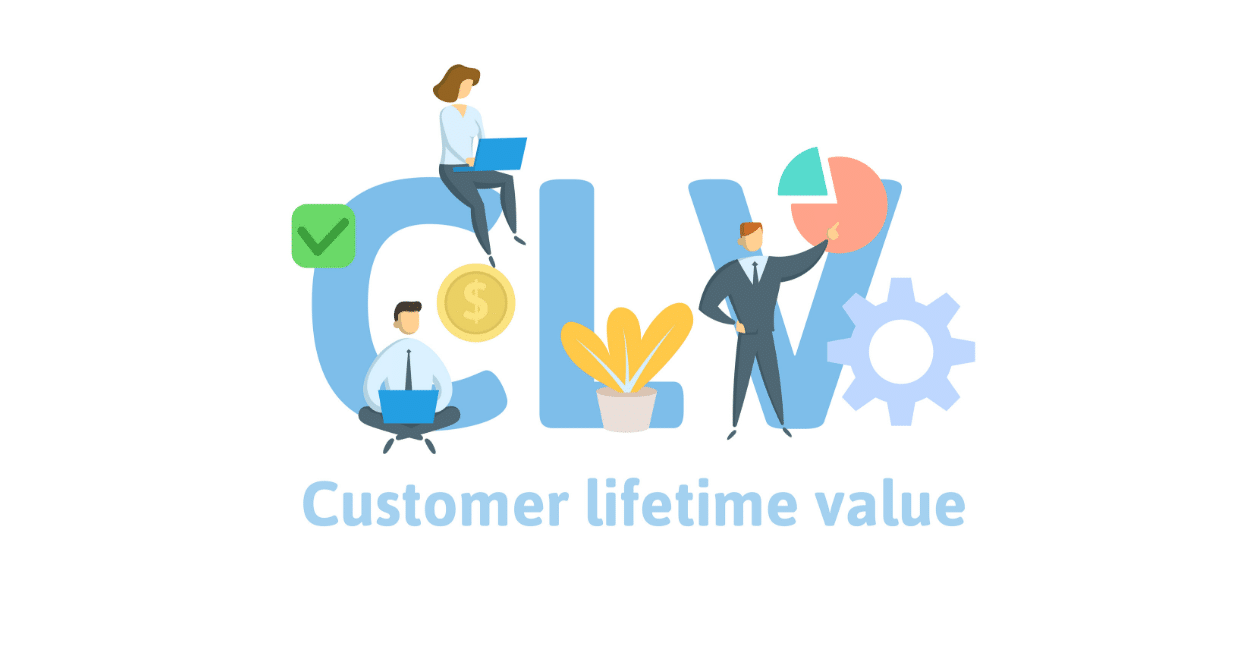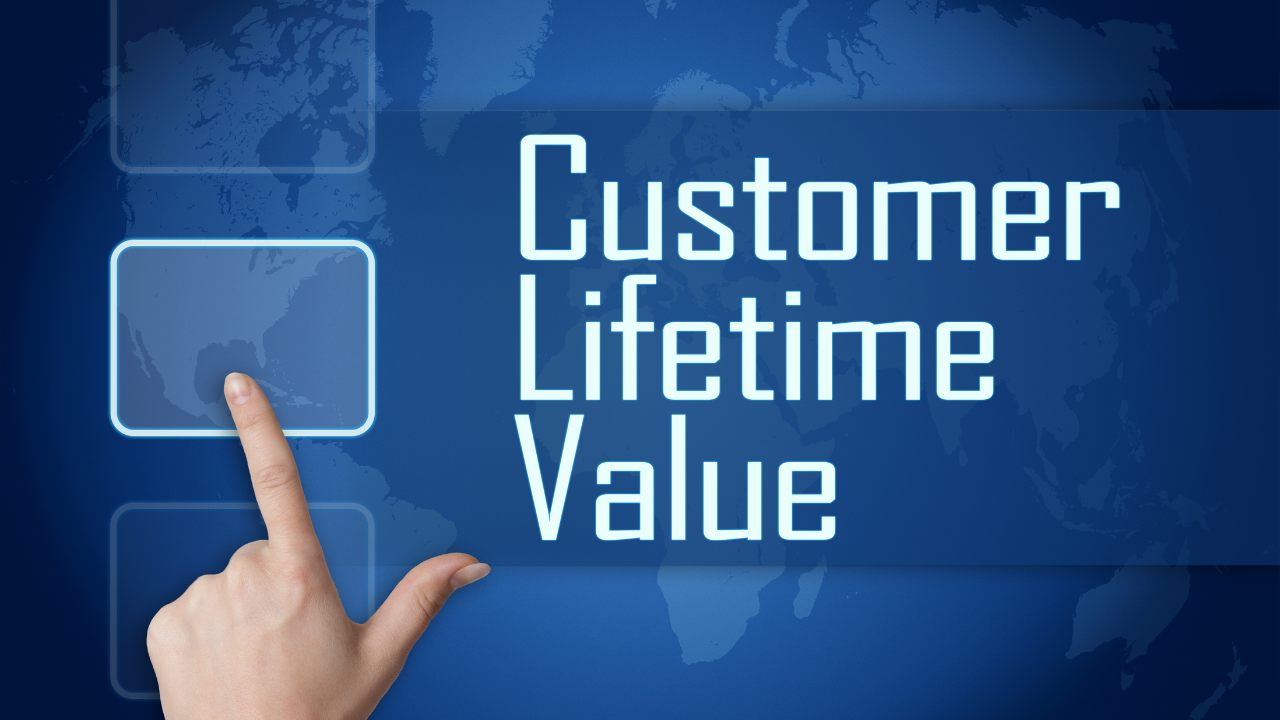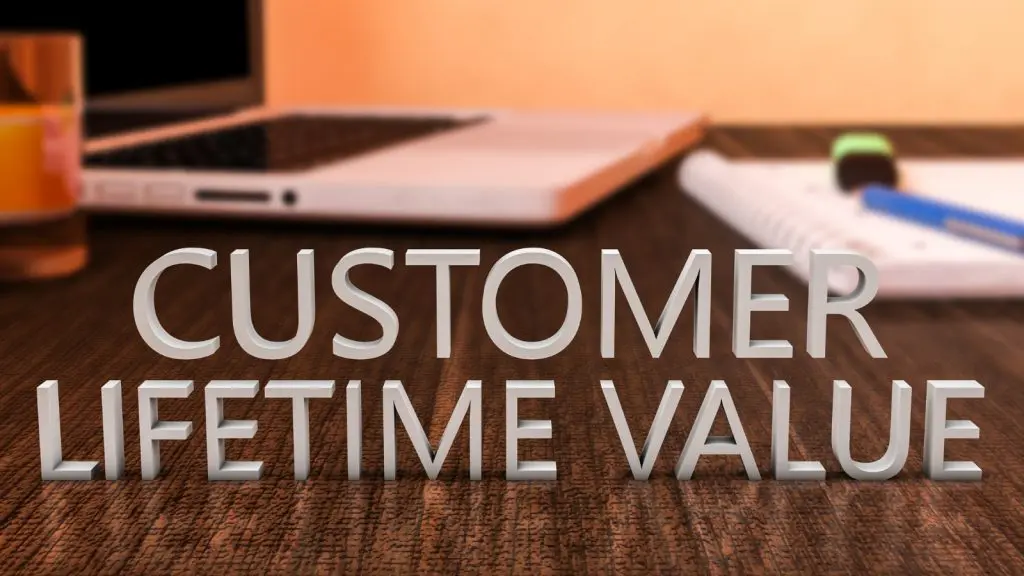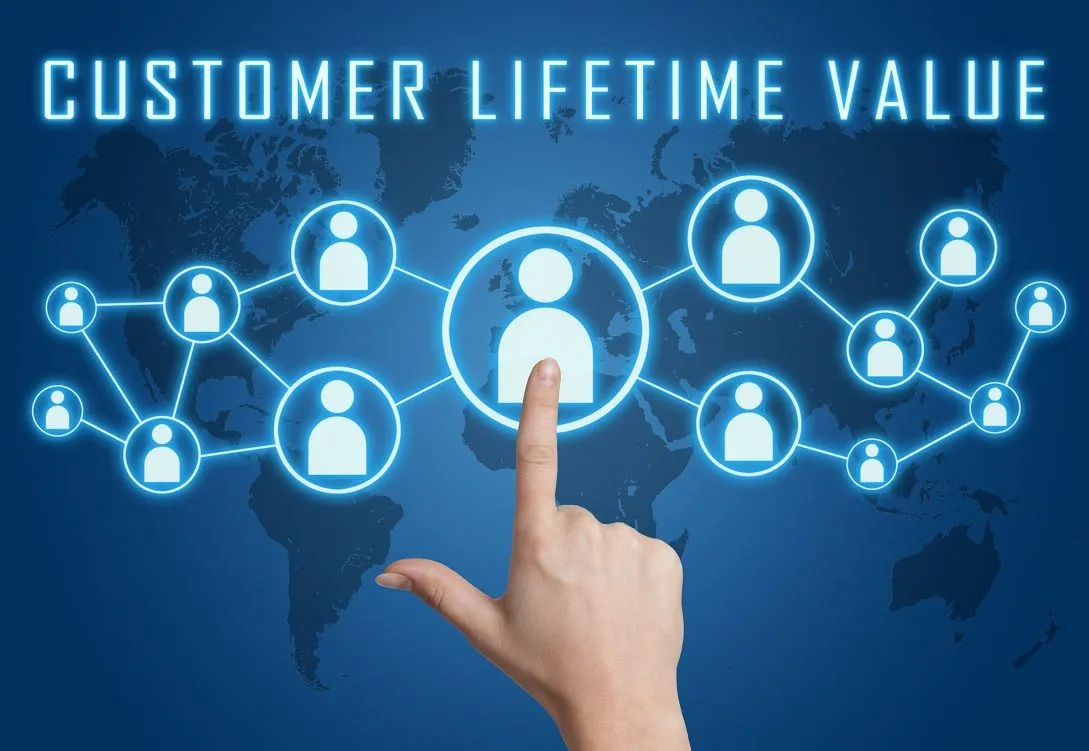
In business where attracting new customers seems to be the primary focus, it’s easy to overlook the true gems—the existing customers who form the foundation of any successful enterprise. That’s where the lifetime value of a customer (CLV) comes into play.
By understanding the lifetime value of a customer, businesses can unlock a treasure trove of opportunities for growth, profitability, and customer satisfaction. In this article, we’ll explore the ins and outs of Customer Lifetime Value, from calculating it to leveraging it for strategic decision-making. So, fasten your seatbelts as we embark on a journey through the world of customer lifetime value!
Benefits of CLV Analysis:

Customer Lifetime Value (CLV) gives businesses valuable insights and advantages in understanding their customers and maximizing their profitability. By analyzing CLV, businesses can better understand their customers’ value, predict their behaviour, optimize marketing and sales strategies, improve customer segmentation, enhance customer retention and loyalty, efficiently allocate resources, establish effective pricing strategies, and prioritize customer satisfaction and experience. Let’s explore the benefits of CLV in detail:
Predicting Customer Behavior:
By harnessing the power of predictive customer lifetime value, businesses gain insights into their average customers’ behaviour, enabling them to make informed decisions and tailor strategies.
CLV analysis gives businesses a deeper understanding of their customers’ purchasing patterns, preferences, and tendencies. By analyzing historical data and extrapolating future trends, businesses can develop accurate predictions about how their average customers will likely behave. This predictive aspect of CLV helps companies anticipate customer needs and desires, allowing them to stay one step ahead of customer demands.
Furthermore, businesses can optimize inventory management, production planning, and supply chain processes by applying predictive customer lifetime value. By understanding the buying patterns of the average customer, businesses can accurately forecast demand, ensure appropriate stock levels, and avoid unnecessary inventory costs. This level of insight allows companies to operate more efficiently and minimize wastage, resulting in improved profitability.
Optimizing Marketing and Sales Strategies:
Customer Lifetime Value helps businesses optimize their marketing and sales efforts. By identifying high-value customer segments, businesses can focus their resources on acquiring and retaining customers with the highest potential for long-term profitability. CLV analysis guides businesses in allocating marketing budgets effectively, targeting the right customers with customized messages at the most reasonable times.
Improving Customer Segmentation:
CLV analysis enables businesses to segment their existing customer base effectively. Businesses can tailor marketing and communication strategies to different segments by understanding each customer’s value. This personalization results in more engaging messaging, relevant product recommendations, and customized offers, driving customer engagement and increasing loyal customers.
Enhancing Customer Retention and Loyalty:

Customer Lifetime Value highlights the importance of customer retention. By identifying customers with high CLV, businesses can invest in strategies to improve customer satisfaction, boost engagement, and foster long-term loyalty. By focusing on customer retention initiatives, businesses can reduce churn, increase CLV, and build a base of loyal customers as a sustainable source of revenue.
Efficient Resource Allocation:
Customer Lifetime Value helps businesses allocate resources more efficiently. By understanding the potential value of each customer, businesses can make informed decisions about where to invest their marketing, sales, and customer service efforts. This leads to better resource allocation, cost optimization, and overall business performance.
Pricing Strategies:
CLV analysis enables businesses to set pricing strategies that maximize long-term profitability. By considering the lifetime value of customers, businesses can determine optimal price points that balance customer satisfaction with revenue generation. Pricing decisions can be tailored to different customer segments, allowing for targeted pricing strategies and increased profitability.
Customer Satisfaction and Experience:
Customer Lifetime Value is closely tied to customer satisfaction and experience. By focusing on maximizing CLV, businesses inherently prioritize delivering exceptional customer experiences. Satisfied customers are more likely to stay loyal, make repeat purchases, and become advocates for the brand. CLV analysis guides businesses in creating personalized experiences that meet customer expectations and build lasting relationships.
Using CLV for Strategic Decision-Making:

Customer Lifetime Value is not just a theoretical concept; it has practical implications for businesses across various operations. Companies can strategically allocate resources by understanding their customers’ lifetime value. They can prioritize investments in customer acquisition based on the potential long-term value customers bring rather than solely focusing on short-term gains.
Additionally, pricing strategies can be fine-tuned to maximize revenue while maintaining customer loyalty. CLV helps businesses identify which marketing initiatives are most likely to yield the highest returns, leading to efficient and effective resource allocation.
Challenges and Limitations of CLV:
While CLV is a powerful tool, it does come with its fair share of challenges and limitations. Data availability and accuracy are crucial factors that impact the reliability of CLV calculations. Obtaining comprehensive and reliable customer data can be complex, especially for businesses in diverse industries.
Long-term predictions can be uncertain as the average customer behaviour and market dynamics may change. Moreover, certain business models, such as those with sporadic or one-time purchases, may have limited applicability for CLV analysis.
Understanding CLV Calculation:
At its core, CLV measures the revenue a customer is expected to generate throughout their relationship with a business. To calculate customer lifetime value, various components come into play.
It’s not just about the dollars and cents; it’s about understanding your customer’s behaviour, preferences, and loyalty. By considering metrics and formulas specifically designed for CLV, businesses can estimate the potential value of each existing customer, both in terms of their immediate purchases and future loyalty.
Best Practices for Calculating and Utilizing CLV:

Businesses should utilize best practices in customer lifetime value calculation to maximize CLV. This includes collecting and analyzing customer data from various touchpoints to understand customer behaviour holistically.
Incorporating customer feedback into CLV calculations allows for a more customer-centric approach. Integrating CLV into business processes and decision-making frameworks is crucial to ensure it becomes an integral part of the company’s strategy.
Calculating Customer Lifetime Value (CLV) doesn’t have to be complicated. Let’s break it down using simple terms and language. Here are some terms you need to grasp:
Average Purchase Value (APV):
To calculate the average purchase value, divide the total revenue your business has earned by the total number of purchases made by your customers. This gives you an idea of how much, on average, each customer spends in one transaction.
Average Purchase Frequency (APF):
APF tells you how often, on average, a customer makes a purchase. To find this, divide the total number of purchases by your total number of customers. It gives you an understanding of how frequently customers return to make additional purchases.
Churn Rate:
Churn rate refers to the rate at which customers or subscribers discontinue their relationship with a business over a specific period.
The churn rate is expressed as a percentage and represents the proportion of customers who have stopped using a product or service within a given timeframe, often monthly or annually.
To calculate the churn rate, you typically divide the number of customers lost during a period by the total number of customers at the beginning of that period. The resulting figure is multiplied by 100 to express it as a percentage.
Customer Lifetime (CL):
The customer lifetime refers to how long a customer stays with your business on average. To calculate customer lifetime, you take the reciprocal of the churn rate. If your churn rate is 10%, the customer lifetime would be 1 divided by 0.10, which equals 10.
Customer Lifetime Value (CLV):
CLV is the estimate of how much revenue a customer will generate throughout their entire relationship with your business. To calculate customer lifetime value, multiply the average purchase value (APV) by the average purchase frequency (APF) and then multiply that by the customer lifetime (CL). This formula estimates the total value a customer brings to your business over their entire relationship.
Gross CLV and Net CLV:
Gross CLV is the total revenue a customer brings after subtracting the customer acquisition cost (CAC). It provides a broader view of a customer’s value by considering the cost of acquiring them.
Net CLV goes further by subtracting the retention cost from the gross CLV. This accounts for the expenses associated with retaining the customer. Net CLV gives you a more accurate representation of the customer’s profitability after considering both acquisition and retention costs.
Cohort Analysis:
Cohort analysis involves grouping customers based on when they started their relationship with your business. It helps you understand how different groups of customers behave over time. By analyzing the purchasing behaviour and revenue generation within each cohort, you can gain insights into CLV variations and make targeted business decisions.
Remember, these calculations provide simplified estimates and can be customized based on your business’s circumstances. It’s important to gather accurate data and consider other factors, such as customer acquisition and retention costs, to understand CLV comprehensively.
Future Trends and Innovations in Customer Lifetime Value:
As technology advances, so does the field of CLV. Innovations in data analytics and AI and machine learning integration offer new possibilities for predicting and optimizing customer lifetime value. Personalization and customization are emerging as critical drivers of customer loyalty, and businesses are leveraging CLV insights to deliver tailored experiences.
Staying abreast of these future trends allows companies to remain competitive and relevant in an increasingly customer-centric world.
Industry-specific Applications of Customer Lifetime Value:

The applicability of CLV extends across a wide range of industries. Retail and e-commerce businesses can leverage Customer Lifetime Value to identify their most valuable customers and tailor marketing strategies accordingly.
Subscription-based companies can estimate the long-term value of their subscribers, allowing for effective customer retention strategies. Even in the financial services sector, CLV can provide insights into customer behaviour, helping banks and insurance companies optimize their offerings.
Ethical Considerations in CLV Analysis:
With great power comes great responsibility, and CLV analysis is no exception. Ethical considerations should be at the forefront of any CLV initiative. Data privacy and security must be prioritized to protect customer information and maintain trust.
Transparency in CLV calculations and their implications is essential to ensure customers understand how their data is used. Businesses should approach CLV analysis with integrity and respect for their customers’ rights and preferences.
Customer Lifetime Value and Customer Experience:

Customer satisfaction and Customer Lifetime Value go hand in hand. By understanding the lifetime value of customers, businesses can tailor their offerings to meet customer expectations, resulting in improved customer experience.
Through CLV analysis, companies can identify pain points, anticipate customer needs, and deliver personalized solutions. Creating a positive customer experience increases CLV and fosters loyalty and advocacy, turning customers into brand ambassadors.
Measuring and Tracking Customer Lifetime Value:
Measuring and tracking CLV is an ongoing process that requires continuous monitoring and updates. Businesses can track their progress and make necessary adjustments by establishing benchmarks and goals.
Regularly reviewing and recalibrating CLV calculations ensures businesses stay aligned with evolving customer preferences and market dynamics. Measuring and tracking CLV empowers businesses to respond to changes proactively, make informed decisions, and adapt their strategies accordingly.
CLV vs Customer Acquisition Cost (CAC):
CLV and Customer Acquisition Cost (CAC) are two sides of the same coin. While CAC focuses on the cost of acquiring new customers, Customer Lifetime Value provides insights into the long-term value these customers bring.
Businesses can evaluate their profitability and growth potential by comparing CLV with CAC. If the cost of acquiring customers outweighs their potential lifetime value, it may indicate the need to optimize marketing and sales strategies or improve customer retention.
Implementing CLV Strategies:
Implementing Customer Lifetime Value strategies requires a cross-functional approach and collaboration across departments. It’s not just the responsibility of the marketing or sales teams; instead, it’s a company-wide endeavour.
Training and education for employees on the importance and intricacies of CLV are crucial for successful implementation. Furthermore, aligning CLV goals with overall business objectives ensures that everyone is working towards a common purpose and maximizing the lifetime value of customers.
Case Studies: Failures and Lessons Learned in CLV:
Learning from failures is just as important as learning from successes. By exploring case studies that highlight the pitfalls and challenges of CLV implementation, businesses can gain valuable insights into what not to do.
Adjusting strategies based on these lessons learned can help companies navigate the complexities of Customer Lifetime Value and increase their chances of success.
Leveraging CLV in Digital Marketing:
Customer Lifetime Value has found a natural association with digital marketing strategies in the modern business landscape. Personalized advertising and targeting based on CLV insights can significantly enhance marketing campaigns’ effectiveness and efficiency.
When combined with customer segmentation derived from CLV analysis, email marketing allows for highly targeted and relevant communication with customers.
CLV and Social Media:

Social media platforms provide a wealth of data that can be harnessed for CLV analysis. Businesses can gain deeper insights into customer preferences, interests, and behaviours by leveraging social media analytics. This information can be used to refine CLV calculations and develop targeted marketing strategies.
Additionally, when combined with Customer Lifetime Value insights, influencer marketing allows businesses to identify influencers whose audience aligns with their high-value customer segments, resulting in more impactful collaborations and building stronger customer relationships.
Implementing CLV Software and Tools:
Implementing Customer Lifetime Value strategies is made easier with the availability of dedicated CLV software and tools. These tools provide businesses with the necessary infrastructure to collect, analyze, and visualize customer data, simplifying the calculation and utilization of Customer Lifetime Value.
When selecting a CLV tool, businesses should consider their specific needs, budget, and integration capabilities to ensure a seamless implementation that aligns with their overall business objectives.
Customer Lifetime Value and Competitive Advantage:
In a fiercely competitive marketplace, understanding the lifetime value of a customer can be a game-changer in gaining a competitive advantage. Businesses can differentiate themselves from competitors by adopting a customer-centric approach and prioritizing existing customers. By maximizing the lifetime value of customers, businesses can secure a long-term and sustainable position in the market.
Conclusion:
Customer Lifetime Value (CLV) is a concept that holds immense importance for businesses of all sizes and industries. By understanding the lifetime value of a customer and investing in strategies that foster customer loyalty and satisfaction, businesses can unlock many benefits.
Customer Lifetime Value empowers companies to make data-driven decisions, allocate resources effectively, and deliver personalized experiences that resonate with customers.
It is not just about acquiring new customers; it’s about nurturing and maximizing the value of existing ones. By embracing Customer Lifetime Value, businesses can thrive in a customer-centric landscape, driving growth, profitability, and long-term success.
So, seize the opportunity to harness the power of Customer Lifetime Value and embark on a journey to unlock the full potential of your customer base.





